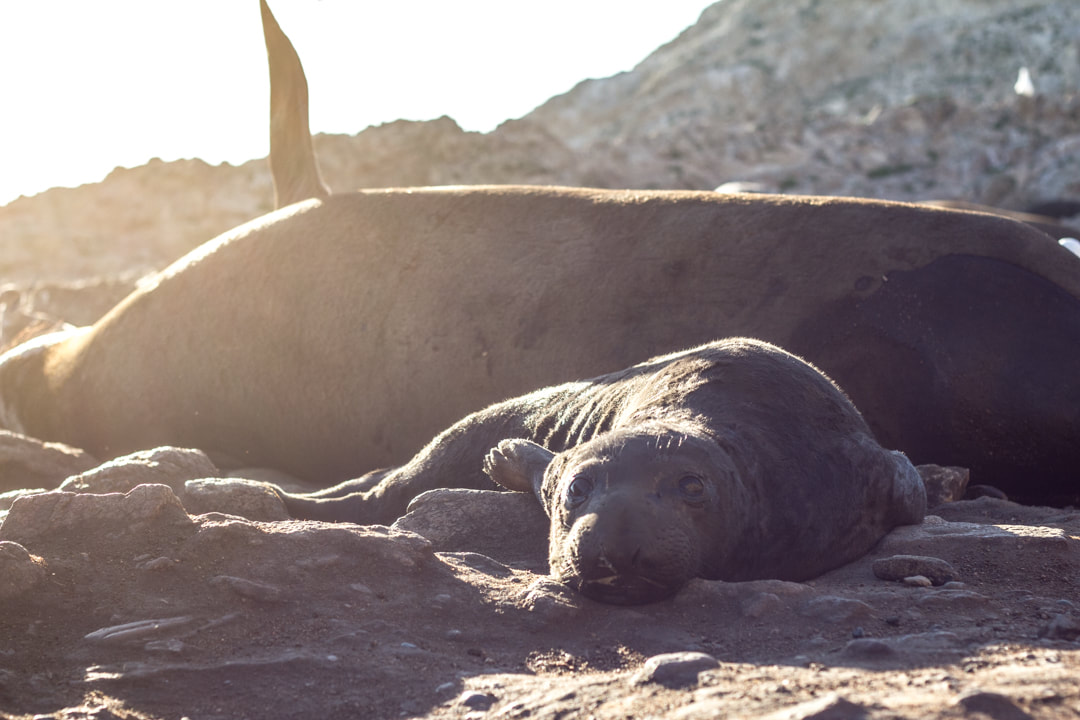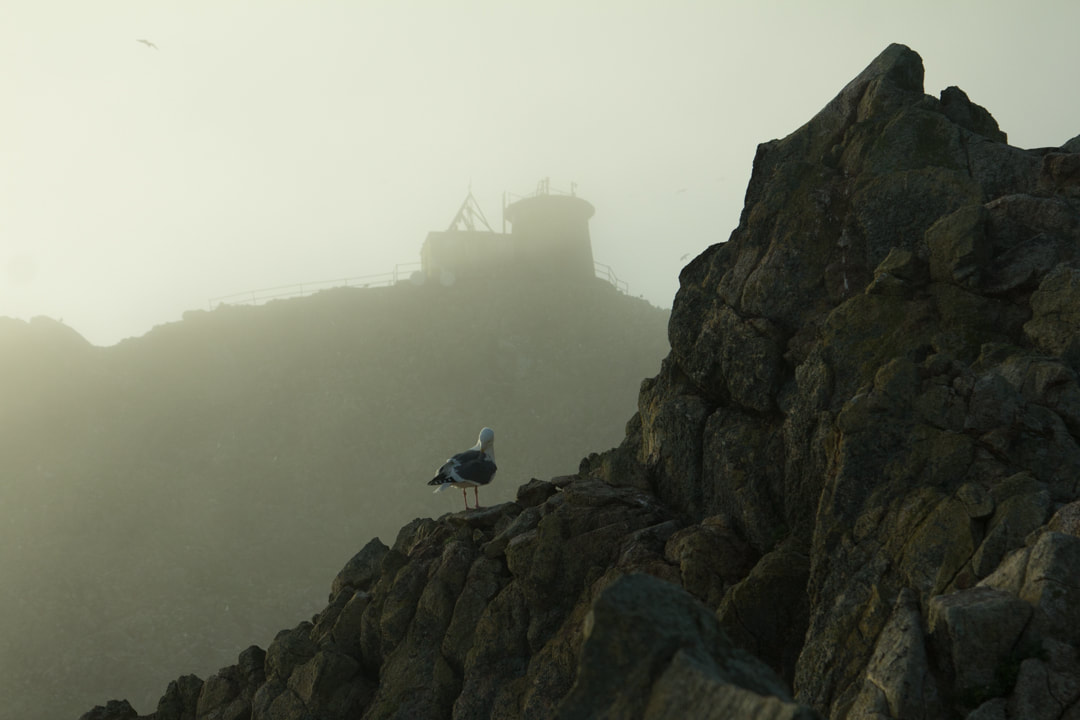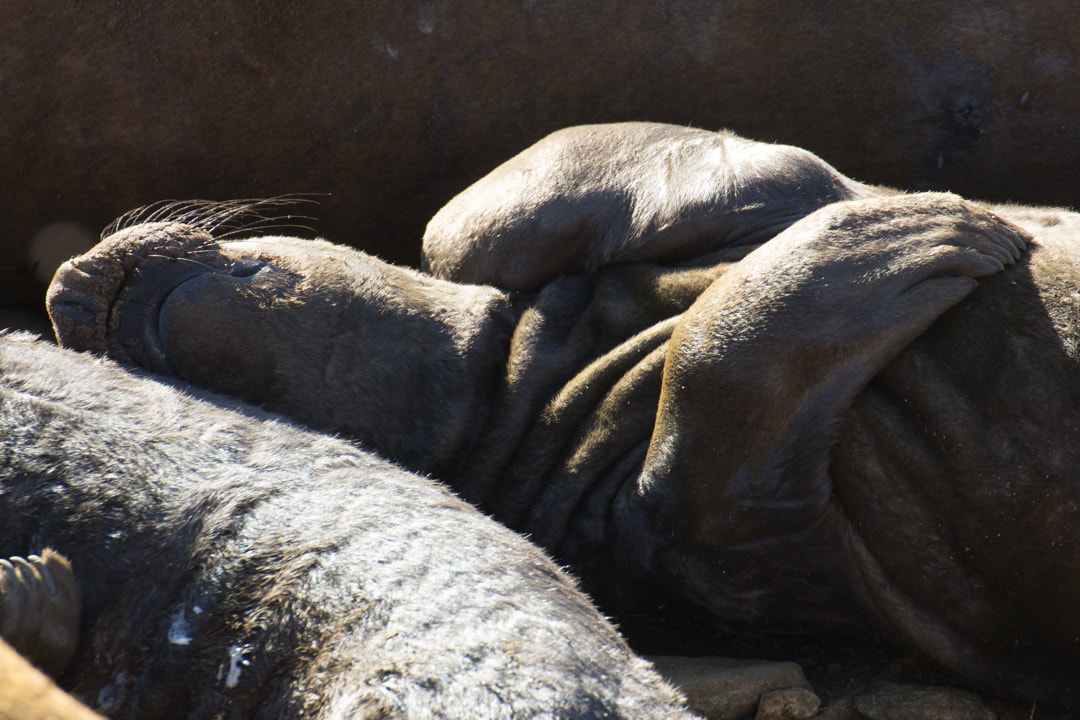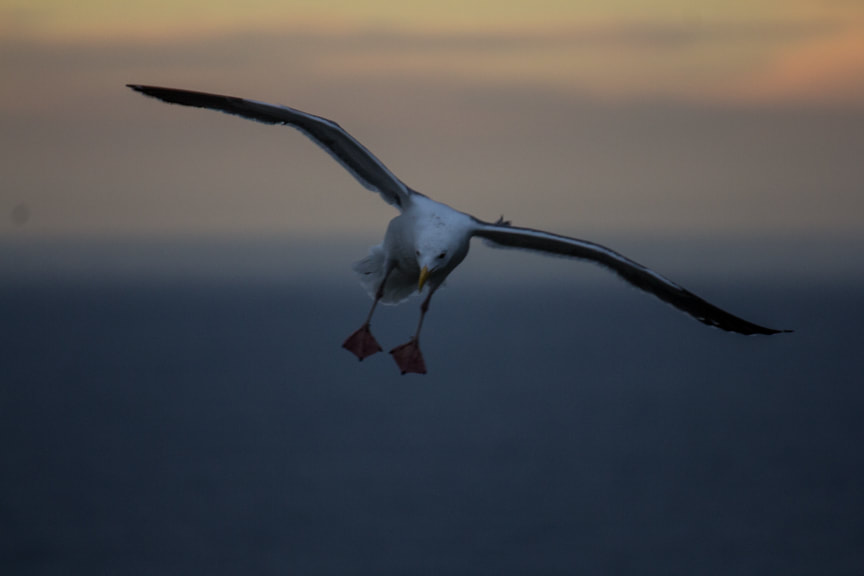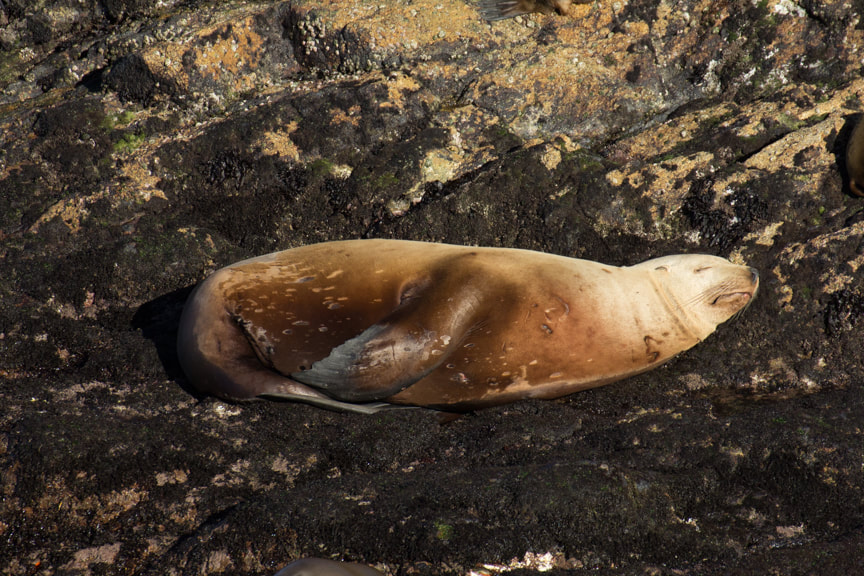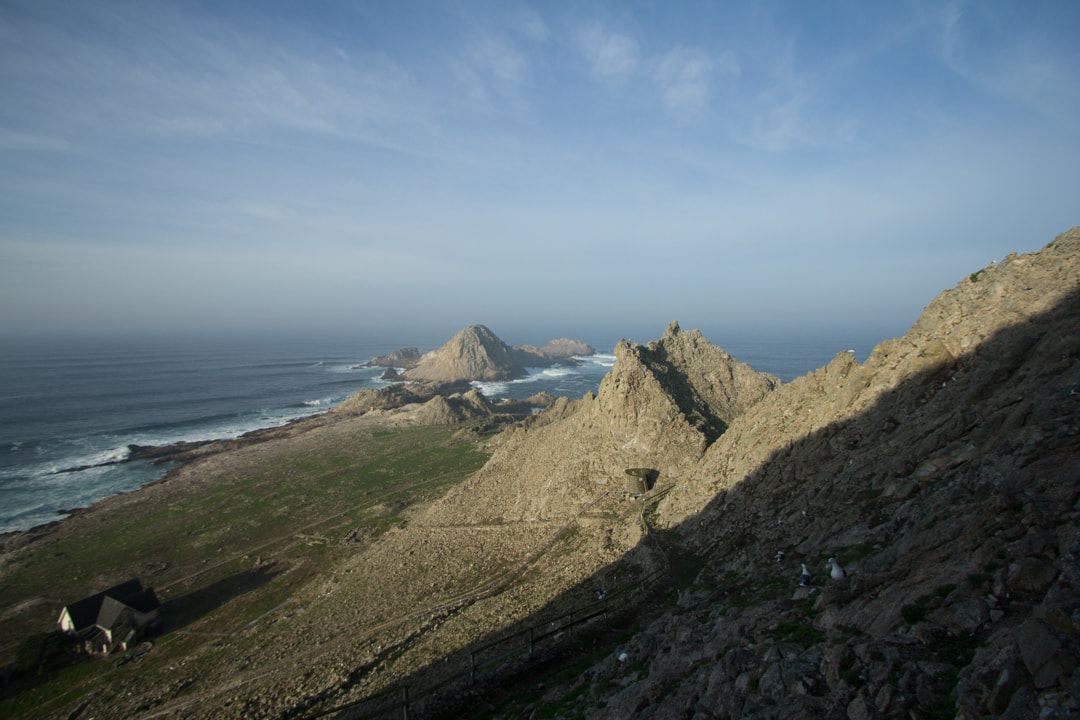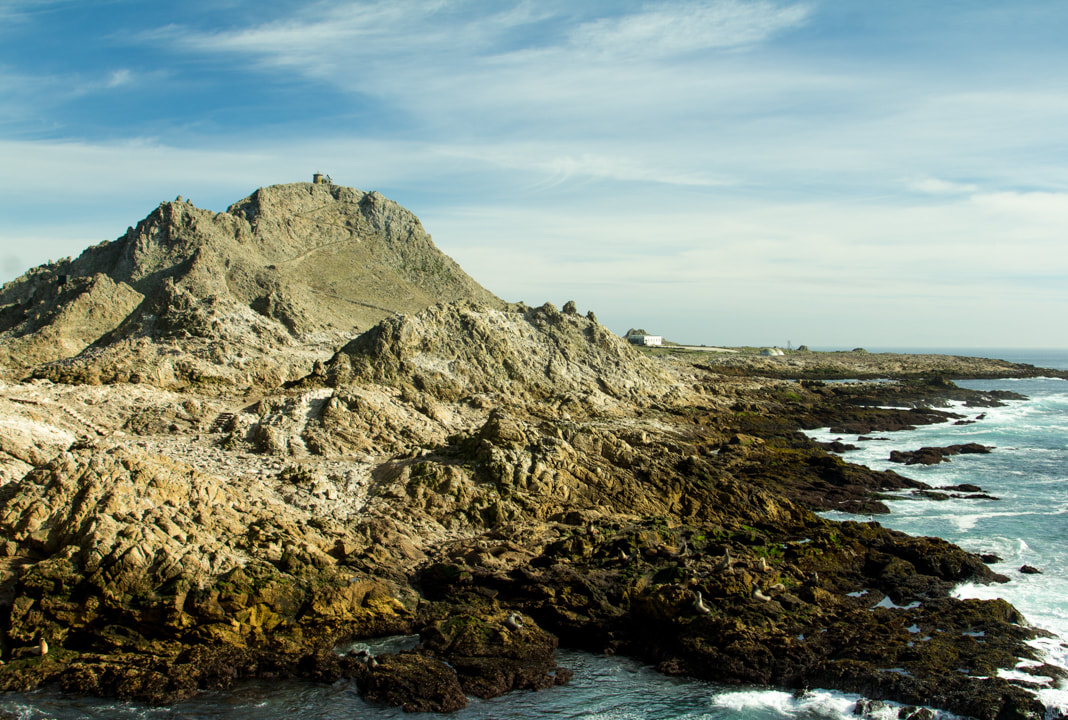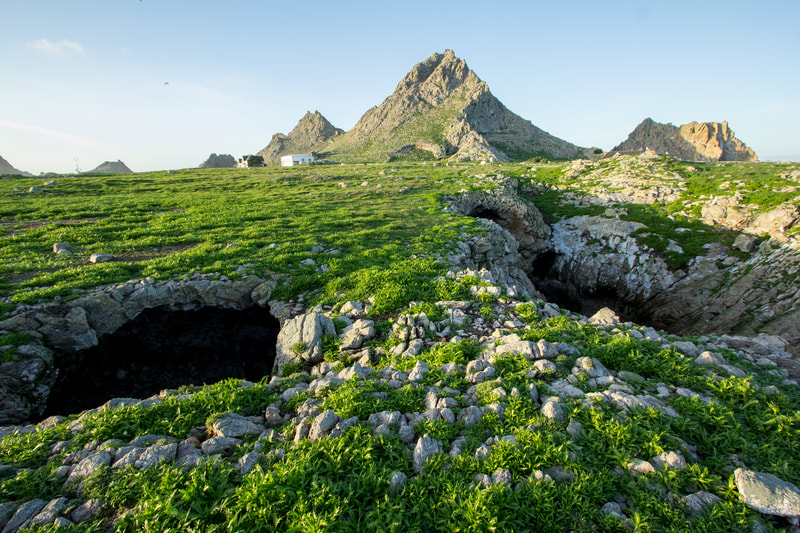During the winter of 2017/18 I spent three months on Southeast Farallon island working as a field biologist with Point Blue Conservation. Biologists have been studying wildlife on this group of rocky islands, 30 miles west of San Francisco, for over 50 consecutive years. Work happens year-round and in the winter, researchers focus their energies on assessing the local Northern Elephant seal colony.
With re-supplies every two weeks from a fleet of volunteers, 5 of us lived on island in one of two remaining coast gaurd houses both maintained by USFW. We took detailed surveys of the elephant seal colonies everyday. Keeping track of the colony by counting males, females, births and deaths. Working on a rotating schedule, we also completed daily island counts for California sea lions, steller sea lions, harbor seals, land birds & sea birds. We recorded the weather and sea-surface temperatures and twice a day looked out for whales from the lighthouse. During the season we also surveyed the two endemic species on island: a cricket & salamander. Every evening after dinner, details of the day's events and sightings went into a journal. Daily journals date back as long as research has been happening there.
Data collected from the Farallon Islands National Wildlife Refuge tells us a lot about the health of the California Current ecosystem and is used to inform conservation policy.
With re-supplies every two weeks from a fleet of volunteers, 5 of us lived on island in one of two remaining coast gaurd houses both maintained by USFW. We took detailed surveys of the elephant seal colonies everyday. Keeping track of the colony by counting males, females, births and deaths. Working on a rotating schedule, we also completed daily island counts for California sea lions, steller sea lions, harbor seals, land birds & sea birds. We recorded the weather and sea-surface temperatures and twice a day looked out for whales from the lighthouse. During the season we also surveyed the two endemic species on island: a cricket & salamander. Every evening after dinner, details of the day's events and sightings went into a journal. Daily journals date back as long as research has been happening there.
Data collected from the Farallon Islands National Wildlife Refuge tells us a lot about the health of the California Current ecosystem and is used to inform conservation policy.
All photographs taken under SUP#81641-17-07
















